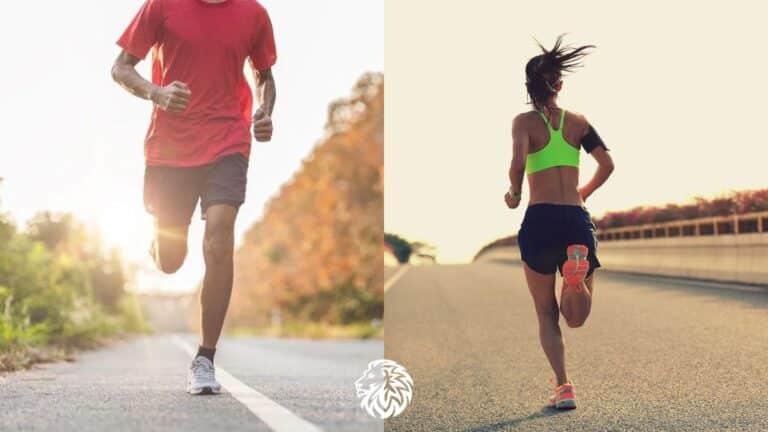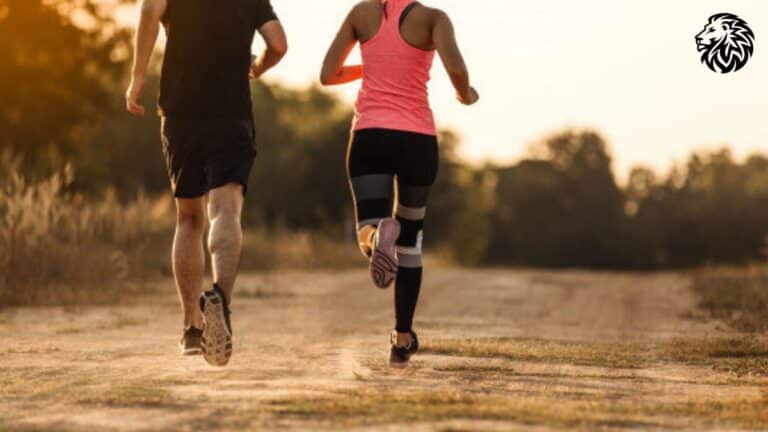Running Injuries Overview
Alright, folks, running is a pretty sweet way to shed a few pounds and keep that ticker of yours in tip-top shape. But hey, it ain’t all sunshine and rainbows. Sometimes, you might trip over your own feet and land in injury-ville. Knowing what mishaps are most likely to rear their ugly heads can help you sidestep them like a pro ballerina.
Common Running Injuries
When it comes to booboos in the running world, the overuse kind loves making an appearance, especially when it comes to your lower bits. Here’s the lowdown on what you might face:
- IT Band Friction Syndrome: When your bum muscles decide to boycott, and you add some bad running mojo to the mix, you’ve got pain hanging around the outsides of your knee and thigh.
- Stress Fractures: Think tiny bone cracks that show up uninvited. They love to strike if you decide to go from couch potato to marathon champ overnight.
- Runner’s Knee: It’s not a special knee for runners; it’s painful, annoying, and happens when muscles aren’t quite seeing eye to eye.
- Shin Splints: Crank up your running game too fast, and your shins might just start screaming at you.
- Achilles Tendinopathy: Fancy talk for heel pain, generally from doing too much too soon.
- Ankle Sprains: A classic tale of twist and shout — at your ankle’s expense.
Prevalence of Running Injuries
Running injuries? Oh, they’re like that annoying relative visiting way more than you’d like. Snooping around and getting all up in your running business. Around half the folks pounding the pavement might feel the sting of these injuries below:
| Injury Type | Estimated Prevalence |
|---|---|
| IT Band Friction Syndrome | 12-15% |
| Stress Fractures | 20-30% |
| Runner’s Knee | 16-25% |
| Shin Splints | 10-20% |
| Achilles Tendinopathy | 11% |
| Ankle Sprains | 15-20% |
Related Topics
Hop on over to our guides for more juicy tidbits that’ll keep your running escapades more joyful and less “ouch”:
- Get your running form on point with proper running form.
- Kicking off your running journey? We’ve got running for beginners covered.
- Shoes matter, folks. Peek at our running shoes reviews to find your trusty foot buddy.
- Warm things up a bit with running warm-up exercises; your muscles will thank you later.
Catch up on these common trip-ups so you can run happy, run strong, and keep injury at bay!
Iliotibial (IT) Band Injuries
Causes of IT Band Friction Syndrome
If you’re hitting the pavement often, you might have heard of IT band friction syndrome. Basically, for folks who love running, it’s when the IT band – a thick strip of connective tissue – gets cranky and inflamed from rubbing against the outside of the knee. Here’s what could be stoking the fire:
- Lazy Glutes: If your backside’s not pulling its weight, your hips might not stabilize right, stressing that IT band far more than it should (Yale Medicine).
- Clocking Too Many Miles: Whether you’re stacking up miles or ramping up too suddenly, overuse is a sure way to aggravate those tissues (Yale Medicine).
- Foot Problems: Got flat feet or overpronating? This could be throwing off your running mojo, paving the way for IT pains.
- Wonky Leg Alignment: If your leg bones are aligned like a drunken architect’s building, it could stress the IT band, stirring up inflammation and pain.
Prevention and Treatment of IT Band Injuries
Keeping that IT band in check ain’t rocket science. With a mix of exercises, good habits, and, sometimes, a little pro help, you can keep it happy. Here’s how:
Prevention
- Pump Up the Muscles: Get friendly with exercises that fortify your glutes, hips, and core. Stronger muscles keep the IT band chill.
- Stretch It Out: Never underestimate a good stretch session. Yoga’s an all-star for loosening up the IT band and its muscle buddies. Check out our yoga guide for runners.
- Master Your Form: Running with good posture is non-negotiable. Nod to our proper running form tips like your knee health depends on it, because it does.
- Slow and Steady: Jumping ahead in your running regimen can backfire. Stick to a solid plan like our beginner’s half-marathon training to ease into higher mileage with grace.
Treatment
| Treatment Tactic | What You Can Do |
|---|---|
| Rest: Let your body hit the pause button by shunning activities that worsen the hurt. | |
| Ice, Ice Baby: Plaster on some ice to cool down inflammation. | |
| Wrap it Up: A snug band around the knee can offer a comforting hug and fight swelling. | |
| Lift Off: Prop that leg up to help gravity ease the swelling. | |
| Get Pro Help: Book a session with a physical therapist for bespoke stretches and strengthening routines. | |
| Pills for the Chill: Anti-inflammatory meds might tame the pain. Chat with your doctor before popping any pills. |
For more nuggets on dodging running injuries and staying on your game, peek at our running tips for beginners and recovery tricks.
By cluing into the whys and hows of IT band friction syndrome, you can keep running without letting painful detours hijack your route. Swing by our running shoe reviews to lace up the footwear that’s on your side throughout the miles.
Stress Fractures
Stress fractures are like the unwelcome party crashers in the runner’s world. These pesky little cracks in the bones show up after pounding the pavement a tad too hard. The tibia and metatarsals are the usual goals – because they play a big role in your running gig.
Tibia and Metatarsal Stress Fractures
When your tibia or metatarsal decides to throw a fit, expect some serious pain. Know what’s up with these injuries so you can dodge ’em or tackle them head-on when they appear.
Tibia Stress Fractures
Your shinbone is a regular spot for these bone rebels. Can’t blame it, really – it’s all about the constant pounding, particularly on harder surfaces. Look out for:
- Repetitive force slamming that’s like 8 times your body weight.
- Lazy glute and quad muscles.
- Wacky leg bone alignments.
Metatarsal Stress Fractures
Metatarsals, those long foot bones, often throw tantrums too. Here’s why:
- Real endurance workouts.
- Funky foot mechanics.
- No-show support for your arches.
Keep those feet pampered, and they might just behave.
Dietary Factors and Stress Fractures
What you chow down on rules your bone health and might decide how often your bones scream for help. Miss out on key nutrients, and your bones could snap like cheap pencils.
Key Dietary Factors
| Nutrient | How It Helps Your Bones | Get It From |
|---|---|---|
| Calcium | Keeps bones strong and thick. | Milk, greens, fortified munchies. |
| Vitamin D | Makes sure calcium doesn’t wander off. | Sunlight, fatty fish, Magic D foods. |
| Protein | Patches up and refreshes bones. | Lean meats, dairy, beans. |
Risk Factors
- Skipping dairy drama.
- Falling into unhealthy eating patterns.
- Hiding from the sun and lacking Vitamin D.
A well-rounded meal plate might just save your bone frame. Grab more info on keeping bones happy by checking out our running nutrition tips and proper running form. Keep an eye on your running goals and sneak in some chill time to avoid injuries. For more cool pointers, pop over to running tips for beginners and how to start running.
Runner’s Knee
Jumping feet-first into the running scene often comes with buzz about runner’s knee – or the more fancy term, patellofemoral syndrome. Getting the lowdown on this can keep your jogs carefree and fun.
Patellofemoral Syndrome
Called runner’s knee in most circles, patellofemoral syndrome crops up when the cartilage beneath your kneecap (patella) gets ticked off. Why? Usually because it’s being overused, the knee joint’s gone a bit wonky, or the muscles around the knee, like the quadriceps, could use some bulking up. Don’t just take my word for it; even the folks at Yale Medicine back this up.
Symptoms and Risk Factors
Catching the signs of runner’s knee early means fewer headaches down the line. Here’s what to watch for:
- Pain hanging around the kneecap, either up front or sneaking behind it
- Trouble bending your knee, like when you walk, get low, or climb
- Knees playing percussion with grinding or popping noises
- Puffy knees giving you grief
Some usual suspects can up your chances of dealing with patellofemoral syndrome:
| Symptom | Description |
|---|---|
| Pain | Holding court around or behind the kneecap |
| Discomfort | Saying hello whenever you bend your knee |
| Grinding/ Popping | Turning your knee into a sound machine |
| Swelling | The kneecap’s way of blowing up angrily |
Based on wisdom from health gurus like Better Health Victoria and The Prehab Guys, here are a few culprits in the mix:
- Overuse: Running like there’s no tomorrow without chill time can spell trouble.
- Weak Muscles: If your quads or glutes are taking it easy, expect knee alignment to go haywire.
- Foot Problems: Flat feet, or feet going rogue with overpronation, heap more pressure on your knees.
- Improper Running Form: Sloppy form equals strain. Need tips? Check out our piece on proper running form.
Got running as part and parcel of your wellness plan? Dive into our guides on how to start running and get the lowdown from running tips for beginners.
For the scoop on stopping injuries in their tracks and brushing up skills, don’t miss our sections on running and yoga and the benefits of running.
Additional Running Injuries
So you’re diving into running, huh? It’s a blast, but knowing the potential hiccups along the way is crucial to dodging them. Let’s hit the highlights on shin splints, Achilles tendinopathy, and those dreaded ankle sprains.
Shin Splints
Shin splints: the bane of many runners. Feel that ache along your shin bone? Sprinting into longer distances or tweaking your routine too fast often brings these on. Distinguishing them from a stress fracture can be tricky, though. And if you’ve got flat feet, you might be more prone to these nagging pains (source: WebMD).
The fix? Slow and steady wins the race. Ease into longer runs and master proper running form while you’re at it. Don’t skimp on shoes, either. Good kicks with arch support are worth their weight in gold.
Thinking about gearing up your body for the run? Check out our running warm-up exercises for some helpful moves.
| Symptom | Detail |
|---|---|
| Pain Location | Along the shin bone |
| Common Cause | Ramping up distance too fast |
| Risk Factors | Flat feet, lousy footwear |
Achilles Tendinopathy
Once known as Achilles tendinitis, this little monster involves some gnarly changes to the Achilles tendon. It’s all about pain, burning, and stiffness—especially when you’re active. More often than not, repetitive running stress is the culprit (WebMD).
How to dodge it? Mix in some strength training and get flexible with your exercises. A balanced workout, maybe blending in running and yoga, takes a load off those tendons.
Curious for more? Our guide on running and weightlifting has got you covered with extra prevention tips.
| Symptom | Detail |
|---|---|
| Pain Location | Back of the leg near the heel |
| Common Cause | Repeated stress from running |
| Risk Factors | Tense calf muscles, abrupt activity hikes |
Ankle Sprains
Ouch! Ankle sprains rank high on the list of runner woes, usually cropping up when your foot goes rogue—twisting or rolling when you least expect it. You’ll feel pain, see some swelling, and hobble around a bit. The go-to remedy? The good old RICE method (that’s rest, ice, compression, elevation) (WebMD).
To steer clear of ankle sprains, work on muscle strength around your ankles and get your balance game strong. Wearing snug and supportive running shoes while staying wary of bumpy paths also helps.
| Symptom | Detail |
|---|---|
| Pain Location | Around the ankle |
| Common Cause | Foot twisting or turning |
| Risk Factors | Uneven paths, wobbly ankle muscles |
Need advice on top-notch shoe choices? Swing by our article about the importance of quality footwear.
Keeping these injuries at bay lets you soak up the benefits of running without the pain. Happy trails!
Preventing Running Injuries
If you’re about to hit the pavement to shed some pounds and boost your health, dodging those pesky running injuries should be top of your list. Just follow a few handy tips and grab some top-notch gear, and you’re less likely to end up sidelined.
Progression and Recovery Tips
The secret to injury-free running? A solid game plan. Take baby steps and steer clear of cranking up speed and distance at the same time. Oh, and don’t forget to let those muscles have their beauty sleep—recovery’s your friend here. Remember, soreness is part of the game, but pain? It’s waving a red flag.
| Top Tips for Avoiding Injury | Here’s the Lowdown |
|---|---|
| Take it Slow | Bump up your miles by no more than 10% each week |
| Keep it Varied | Mix in cross-training and strength moves to bulk up supporting muscles |
| Time Out | Rest days are for winners and muscle recovery |
| Flex Time | Stretch before and after your jog to stay limber and dodge strains |
| Body Talk | Nip pain in the bud to keep it from getting serious |
For a deep dive into starting your running journey, peek at our guide on running for beginners.
Importance of Quality Footwear
Let’s chat shoes. They’re a big deal when it comes to keeping those injuries at bay. The right kicks for your unique feet and style can be game-changers. Swing by a store where the pros can hook you up with a pair that fits your stride and prances.
When picking your running shoes, think about:
| Thing to Think About | What to Ponder |
|---|---|
| Arch Type | Whether your arches are flat, normal, or high steers your shoe pick |
| Pronation | The way your foot rolls as you run—do you overpronate, stride neutrally, or underpronate? |
| Terrain | Whether you’re pounding trails, roads, or treadmills guides your choice |
Check out our shoe reviews section at running shoes reviews. And for more on gear, mosey over to importance of quality footwear.
By keeping these tips in mind and investing in solid shoes, you’re set to sidestep common injuries. Dive further into proper running form and running warm-up exercises for a foolproof prevention plan.







